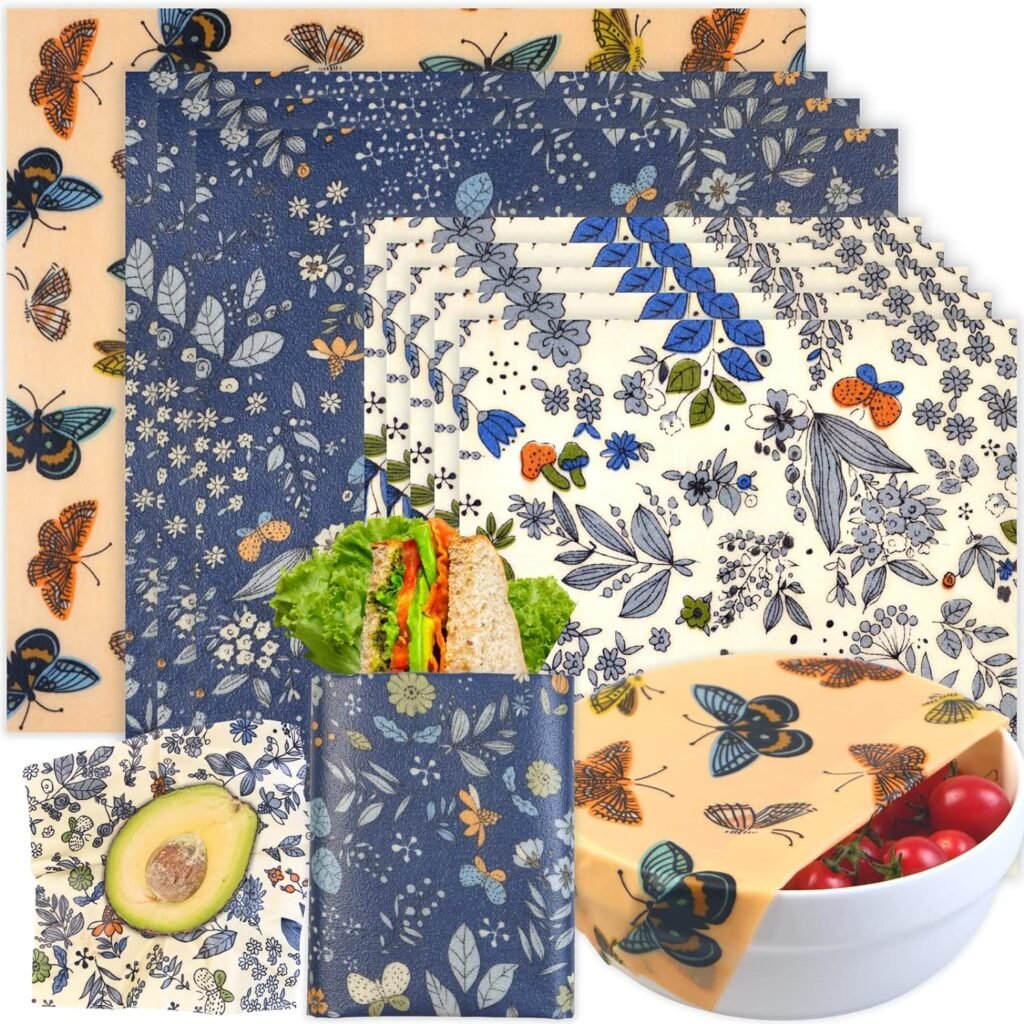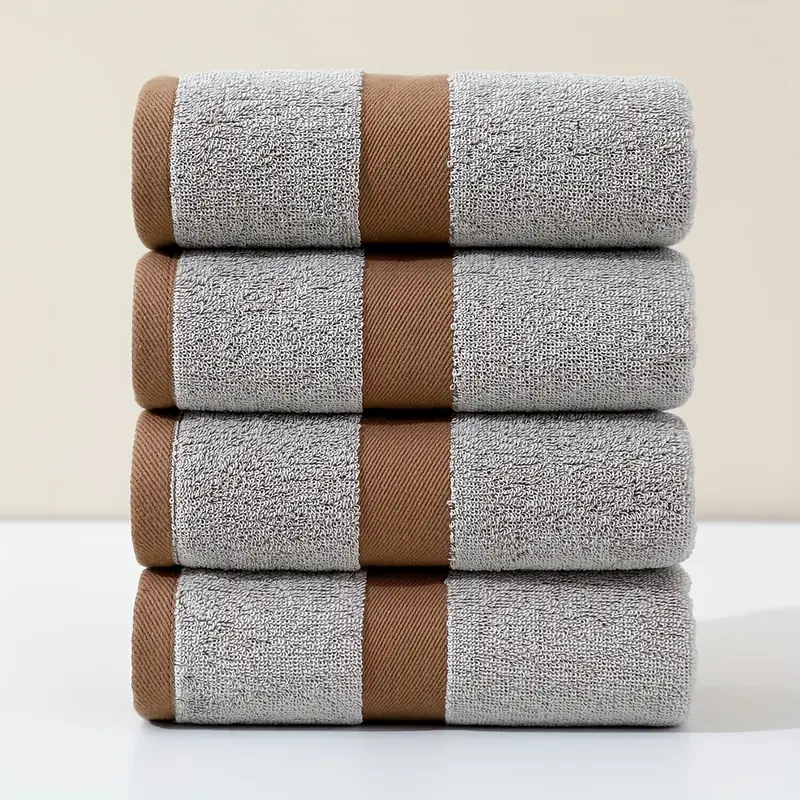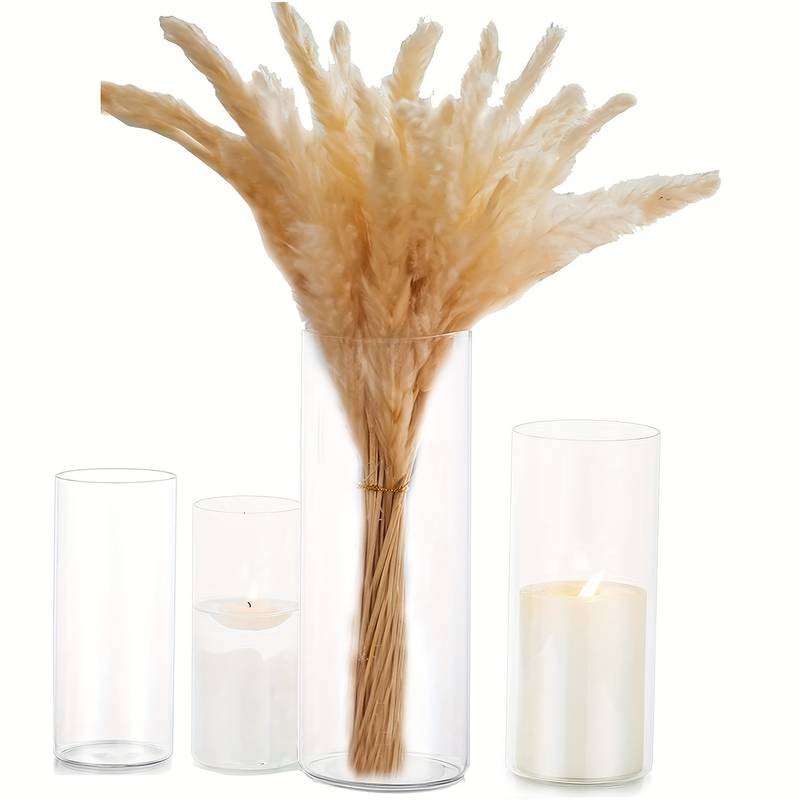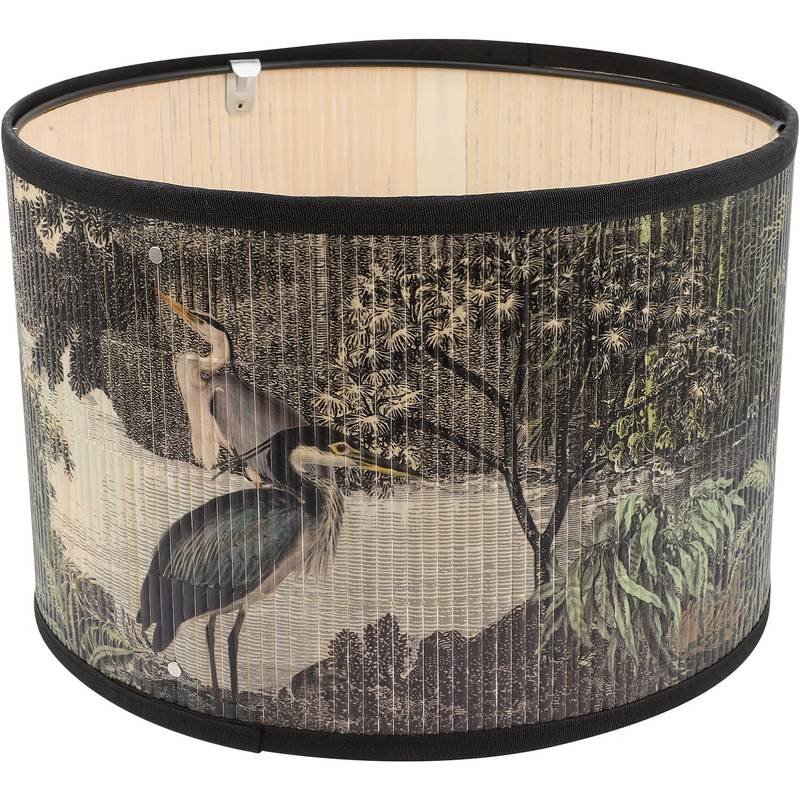Focusing on eco-friendly living, this post explores the integration of recycled materials, organic fabrics, energy-efficient lighting, and indoor plants.
In an era where environmental sustainability is gaining unprecedented importance, home decor is not left untouched. In 2024, the spotlight is shining brightly on sustainable decor. This signals a distinctive shift towards eco-friendly living.
Take, for example, the kitchen interior. The image below features carefully designed Beeswax wraps for food. Even our bowls are being decorated, conscientiously.

This transformation is driven by growing environmental concerns and an increasing awareness of our ecological footprint, prompting many homeowners to rethink their interior design choices. The integration of sustainable materials, energy-efficient solutions, and an emphasis on reducing waste are all factors in this evolving trend.
Sustainable decor is no longer a niche; it has become a mainstream movement influencing the design and functionality of contemporary homes.
Homeowners are increasingly valuing items that are not only aesthetically pleasing but also environmentally responsible. The preference for recycled materials, organic fabrics, and energy-conserving appliances is reshaping interiors as both stylish and sustainable. This trend reflects a broader lifestyle choice where ecological stewardship plays a crucial role.
This blog post aims to explore the top sustainable decor trends of 2024, offering practical advice on how to incorporate environmentally conscious practices into your home. The journey towards a greener home begins with informed choices, and we are here to guide you through every step.
Upcycled and repurposed sustainable furniture
Upcycled and repurposed furniture embodies the principle of sustainability by giving old pieces a new lease on life instead of discarding them.
This innovative approach to interior decor reduces waste and infuses living spaces with unique charm and character. By transforming discarded items into functional and aesthetically pleasing pieces homeowners lower environmental impact while showcasing their creativity and individual style.
One of the standout benefits of upcycling is waste reduction. Rather than contributing to the growing problem of landfill overflow, upcycled furniture reintroduces materials back into the home in new and exciting forms.
Popular upcycled pieces include pallet wood coffee tables, which offer a rustic and industrial feel, and repurposed industrial piping shelves that deftly combine utility and modern design. These items make a statement and tell a story, adding depth and personal meaning to interior spaces.
Additionally, upcycled furniture often becomes a focal point in room design due to its distinctiveness. Unlike mass-produced items, each upcycled piece carries its history and craftsmanship, ensuring that no two items are identical. This uniqueness promotes a more personalized home decor style, enabling homeowners to express their creativity and preferences effectively.
For those looking to embark on their upcycling projects, do-it-yourself (DIY) tips are invaluable. Start by scouring thrift stores, garage sales, and flea markets for potential items.
Basic tools such as sanders, paint, and varnish can transform worn furniture into elegant pieces. Experimenting with combining materials, such as attaching reclaimed wooden tops or old dressers, can yield stunning results. The key to successful upcycling lies in a willingness to think outside the box to see the potential in otherwise neglected items.
Ultimately, upcycled and repurposed furniture reflects an eco-conscious lifestyle, sparks creativity, and injects unique flair into any home. Embracing these practices allows for the creation of spaces that are both sustainable and uniquely personal.
Natural and organic materials
Incorporating natural and organic materials in home decor has gained significant momentum in 2024. Materials such as bamboo, cork, reclaimed wood, and organic cotton are highly sought after for sustainability and health benefits.
Bamboo, for instance, rapidly grows and requires less water when compared to traditional timber, making it an eco-friendly choice. Similarly, reclaimed wood repurposes old timber, reducing the need for new logging and promoting a circular economy.
Take for example this reusable tea bag featured in the video below. Manufacturers have noticed and created a product like this to help people reduce waste, adopt a sustainable mindset, and enjoy something lovely.
Products made with materials like these are typically sourced sustainably and locally while ensuring a minimal environmental impact by reuse.
Environmental support
Not only do these natural and organic materials support the environment, but they also contribute to healthier living spaces. Conventional home decor products often contain harmful chemicals and toxins, that adversely affect indoor air quality.
In contrast, natural materials are devoid of these harmful substances, providing a cleaner and healthier environment.
Incorporating these materials into home decor can enhance various elements within the home. Bamboo and cork are versatile options for flooring, offering both durability and aesthetic appeal. They are visually pleasing and comfortable underfoot, adding a warm and inviting feel to living spaces.
Reclaimed wood can be utilized in furniture design, bringing a unique character and history to each piece. From dining tables to coffee tables, reclaimed wood offers a rustic yet refined look that fits into modern and traditional interiors.
Organic cotton is a top choice for soft furnishings like cushions, curtains, and upholstery. Being free from synthetic pesticides and fertilizers, organic cotton is sustainable and gentle on the skin, making it ideal for items that come into close contact with people.

By embracing these natural and organic materials, homeowners can transform their living spaces into eco-friendly sanctuaries. The use of sustainable decor not only benefits the planet but also creates healthier, toxin-free environments, promoting overall well-being.
Sustainability and health go hand-in-hand: Look at paints
In recent years, the demand for eco-friendly paints and finishes has surged as homeowners increasingly prioritize sustainability and health.
Products with low or zero volatile organic compounds (VOCs) have gained popularity due to their minimal environmental impact and reduced potential for adverse health effects compared to conventional paints. VOCs are chemicals that easily become vapors or gases, contributing to indoor air pollution and posing health risks such as respiratory issues and headaches.
Eco-friendly alternatives stimulate homeowners to improve indoor air quality and create healthier living spaces.
Eco-friendly paints and finishes contribute to a sustainable home. They offer high performance and durability. Noteworthy brands, including Benjamin Moore’s Natura, Behr Premium Plus, and Sherwin-Williams Harmony, have established themselves as leaders in painting and painting supplies.

These companies have developed formulations that ensure vibrant colors, extensive coverage, and long-lasting finishes while adhering to stringent environmental standards.
When selecting eco-friendly paints, one should consider factors, such as specific VOC levels, certifications, and the type of surfaces being painted. Products bearing certifications from organizations like GreenGuard or Green Seal are vetted for their low chemical emissions and environmental footprint.
Interior walls benefit from zero-VOC paints, providing a safer environment, especially in areas such as bedrooms and nurseries. For exterior surfaces, eco-friendly options with added durability and weather resistance can be advantageous.
Beyond paints, sustainable finishes also play a crucial role in home decor.
Water-based stains and varnishes release fewer harmful emissions when compared to their oil-based counterparts. Oil-based stains are ideal for wood surfaces like furniture and flooring. Natural oil finishes, such as those based on linseed or tung oil, offer an eco-conscious choice that enhances the wood’s natural beauty without compromising protection.
In summary, the shift towards eco-friendly paints and finishes represents a significant step towards sustainability. By prioritizing these products, homeowners foster a healthier home environment and support broader environmental conservation efforts.
Energy-efficient lighting stands at the forefront of sustainable home decor in 2024
As more homeowners turn towards eco-friendly solutions, understanding the significance of energy-efficient lighting becomes paramount.
Traditional incandescent bulbs are rapidly being replaced by LED bulbs, solar-powered lighting, and smart lighting systems, offering environmental benefits and significant cost savings.
LED bulbs, known for their longevity and energy efficiency, consume up to 80% less energy than traditional incandescent bulbs, reducing electricity bills and greenhouse gas emissions. Additionally, their prolonged lifespan means less frequent replacements, resulting in lower maintenance costs and reduced waste.
Another viable option is solar-powered lighting
By harnessing solar energy, solar lights provide an eco-friendly, cost-effective alternative to conventional outdoor lighting. These systems, which include garden lights, pathway illuminations, and even street lights, are perfect for areas with abundant sunlight and contribute greatly to reducing fossil fuel dependency.
Smart lighting systems, which have gained immense popularity, offer an advanced approach to energy efficiency. These systems enable homeowners to control lighting through smartphones or voice-assistant devices, optimizing usage according to need. Smart bulbs often include features, such as dimming options, automated schedules, and motion sensors, ensuring lights are used only when necessary.
Implementing energy-efficient lighting in different rooms requires thoughtful planning and creativity. Living rooms and bedrooms are excellent locations for this trend.
Consider installing LED strip lights behind furniture or within coving to create ambient lighting, reducing the need for multiple light sources. With kitchens, consider an under-cabinet LED lighting option to effectively establish a light source while minimizing shadows and energy use. With bathrooms, look for LED vanity lights and smart mirrors that integrate lighting with practical functions.
By combining these energy-efficient lighting solutions, homeowners can significantly reduce their carbon footprint and enjoy lower electricity costs without compromising style or functionality. Embracing these innovations enhances the aesthetic of living spaces and contributes to a greener, sustainable future.
Sustainable textile choices
One significant aspect of this shift is the growing trend toward sustainable textiles. With the rising awareness of the environmental impact caused by conventional textile production, more individuals are seeking alternatives that are not only stylish but also eco-friendly.
The production of conventional textiles contributes heavily to environmental degradation. In contrast, sustainable textiles like organic cotton, hemp, and recycled fabrics offer a more responsible choice.
Organic cotton, for example, is grown without synthetic pesticides or fertilizers, making it healthier to produce. Hemp, a naturally durable and mold-resistant material, requires significantly less water and chemical treatment when compared to traditional cotton. Recycled fabrics are created from post-consumer or pre-consumer waste, helping in reducing the industry’s overall carbon footprint and the amount of waste sent to landfills.
Rugs crafted from recycled materials can add texture and environmental mindfulness to your living spaces. For comfort and eco-friendliness, choose cushions and throws made from sustainable fabrics. Bedding crafted from organic cotton provides a soft, comfortable experience and peace of mind.
Choosing sustainable textiles is part of a larger effort to create a home that’s beautiful and considerate of our planet. By incorporating these materials in everyday items, we can transform our living spaces into havens of sustainability without compromising on style or comfort.
Indoor plants and greenery
Integrating indoor plants into home decor has become an increasingly popular trend due to their benefits and inherent sustainability. Indoor plants are more than just a style statement; they bring a natural element into living spaces that contributes significantly to overall well-being.
One of the primary advantages of incorporating greenery in home decor is air purification.
Plants such as the snake plant, spider plant, and peace lily are known for their ability to remove toxins and improve air quality. This natural filtration process cleanses the air and promotes a cleaner, fresher atmosphere.
Moreover, the presence of indoor plants has been proven to reduce stress, enhance mood, and increase productivity. The serene and calming effect of greenery can transform any room into a tranquil retreat, counteracting the daily stressors of modern life.
Aesthetic appeal is another reason indoor plants are increasingly favored in sustainable home decor. Plants like succulents, pothos, and monstera add visual interest, texture, and vibrant color to indoor spaces, making any area come alive with natural beauty.
For those considering incorporating indoor greenery but are worried about upkeep, various low-maintenance plants are perfect for both novice and experienced plant owners.
For example, succulents and cacti require minimal water and can thrive in diverse lighting conditions. Meanwhile, ZZ plants, also known as Zamioculcas, and philodendrons are incredibly resilient and easy to care for. These plants enhance the visual appeal of living spaces and bring a touch of nature’s resilience indoors.
When incorporating greenery into different parts of the home, consider the specific lighting and space requirements of each plant. Use small potted herbs in the kitchen, trailing plants in hanging baskets for the living room, and larger statement plants in corners or near windows.
By thoughtfully selecting and placing indoor plants, one can effortlessly elevate the design of their home while fostering a healthier and more serene living environment.
To summarize, indoor plants are a quintessential element of sustainable home decor, harmonizing aesthetic and ecological benefits.
Minimalist and multi-functional mindful designs
As we move into 2024, the trend of minimalist and multi-functional designs is becoming increasingly prominent in sustainable home decor. These designs not only enhance the aesthetics of a space but also contribute significantly to sustainability. Minimalism, with its focus on simplicity and decluttering, naturally reduces consumption. By prioritizing fewer, better-quality items homeowners can create a more sustainable lifestyle while enjoying a stylish and contemporary living environment.
Minimalist decor promotes a streamlined, serene space, free of unnecessary items that often end up as waste. When you embrace minimalistic principles, you are dramatically reducing clutter. Minimalism leads to a more organized and efficient home. This reduction in clutter also minimizes the environmental impact associated with producing, transporting, and discarding excess goods.
Multi-functional furniture and decor pieces are at the heart of this trend. Such items serve multiple purposes, maximizing their utility while conserving space and resources.
For instance, sofa beds are an excellent example of a multi-functional piece, they serve as comfortable seating by day and transform into a cozy bed by night.
Similarly, extendable tables can adapt to various needs, providing a compact dining area for everyday use and expanding to accommodate guests during gatherings. Storage ottomans and modular shelving units are other versatile options that combine functionality with style.
These multi-functional items are often designed with a focus on sustainability by using durable, renewable, or recyclable materials. This focus on longevity ensures that these pieces will not need to be replaced frequently, thereby reducing environmental impact over time.
Furthermore, the adaptability of such designs reflects a broader movement towards conscious consumption, where every purchase is intentional and thoughtful.
Integrating minimalist and multi-functional designs into home decor is a practical approach to furnishing space and a meaningful step towards a sustainable and mindful way of living. By selecting items that offer versatility and longevity, homeowners can create beautiful and environmentally responsible spaces.
Recycled glass vases
Recycled glass vases are a perfect blend of elegance and eco-friendliness. These vases are crafted from post-consumer glass, reducing landfill waste. Key features include durable construction and unique designs that add a touch of sophistication to any room.

Organic cotton throw blankets
Organic cotton throw blankets offer comfort and sustainability. Made from 100% organic cotton, these throws are free from harmful chemicals and pesticides.
Bamboo table lamps and accessories
Bamboo table lamps combine function with sustainability. These lamps utilize fast-growing bamboo, a sustainable material, for both the base and shade. The energy-efficient LED bulbs minimize electricity use.

Reclaimed wood shelves
Reclaimed wood shelves are a stylish way to incorporate sustainability into your home. Constructed from repurposed wood, these shelves have a rustic charm and are highly durable.
Integrating budget-friendly sustainable decor products enhances your home’s aesthetics while supporting eco-conscious choices. Each product aligns with overarching sustainability trends, ensuring your home reflects your style and values.
Conclusion: Embrace the future of sustainable living
In this era of heightened environmental consciousness, adopting sustainable decor trends is a lifestyle choice and a responsibility toward our planet.
Throughout this article, we have explored key trends for 2024 that promise to transform your home into an eco-friendly haven. From utilizing recycled materials and embracing the beauty of upcycled furniture to integrating energy-efficient lighting and natural textiles, these practices reflect a harmonious blend of aesthetics and sustainability.
Incorporating sustainable decor trends can drastically reduce your environmental footprint while creating a serene and stylish living environment. Small steps, such as opting for eco-friendly paints and choosing locally sourced decor items, contribute significantly to sustainability efforts.
These conscious choices benefit your home by fostering a healthier indoor climate and support the global push towards preserving our natural resources.
We invite you to take these initial steps toward a greener lifestyle and share your journey with us. Have you already implemented some of these sustainable trends in your home? Do you have unique tips or ideas to contribute? Engage with us and fellow readers in the comments section below—we are eager to hear your experiences and continue this conversation on sustainable living.
